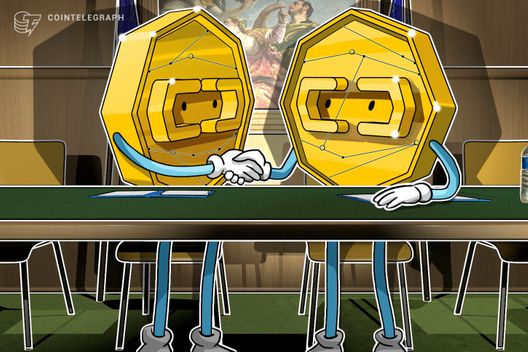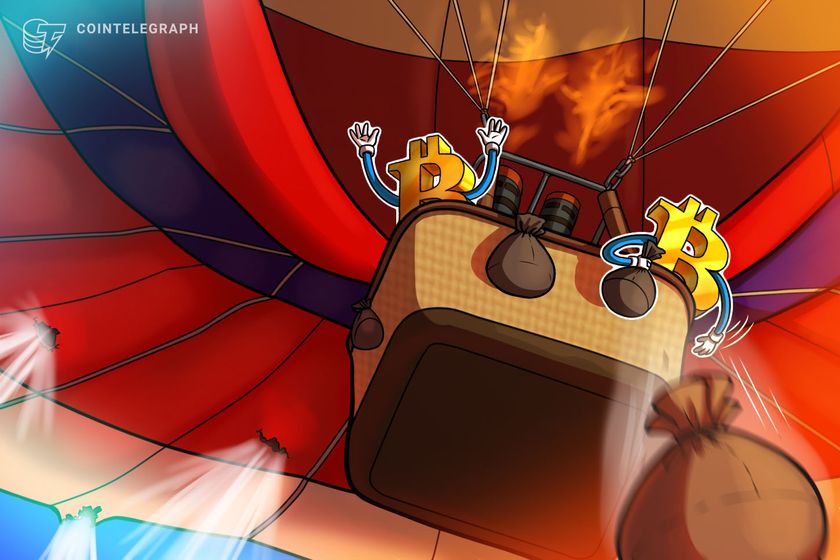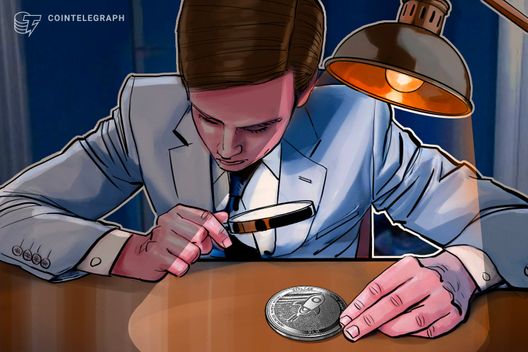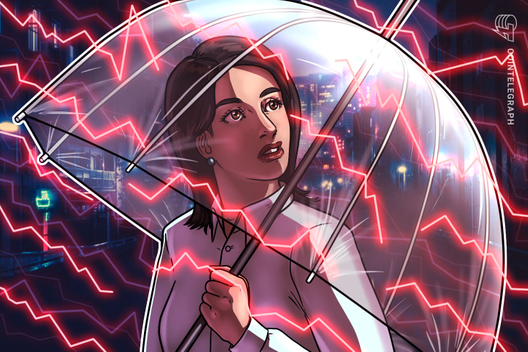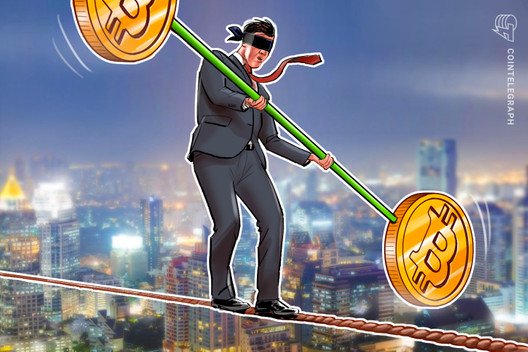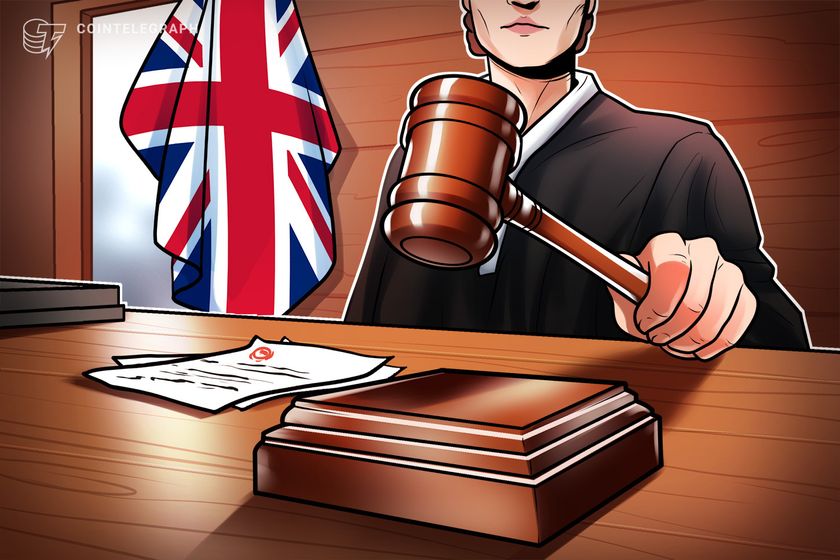Game Review: Upland — Expanding Its Virtual Metaverse to Include NYC
Blockchain-based real estate trading game and DappRadar Top 5 gaming Dapp, Upland, has expanded its metaverse to include New York City, as of Aug 20.
The expansion adds virtual properties mapped to actual Manhattan addresses and will be opened in several phases, with the first bubble to launch being the Lower East Side. Further bubbles will cover Midtown, the Upper West Side, the Upper East Side and Chelsea.
At the same time, Upland will launch new districts in San Francisco, adding to the existing map.
While this may be very exciting news for some, it will undoubtedly leave others scratching their heads and wondering what this all means.
So after several hours of playtesting, Cointelegraph took this opportunity to review the public beta of Upland and explain what it’s all about.
Sign me up
Firstly, as the game is still in public beta it is being updated regularly and you may occasionally have issues.
As an example, when I first tried to play, all I saw was an empty map, save for a city hall building which told me it was under construction. Trying again on a different browser presented me with the expected log-in/sign-up window.
The game is also available for mobile devices on the iOS and Android app stores.
Whichever route you choose, you will want to use a bonus link like this one exclusively for Cointelegraph readers. This will net you 6,000 of Upland’s in-game currency, UPX, as opposed to the regular 3,000.
Once signed up, simply choose a design for your Block Explorer (essentially your playing piece), and away we go.
Getting started
Upland’s virtual metaverse is overlaid onto the real-world map of San Francisco (and now New York). Street plans and building plots are accurately marked, which users can buy and later trade or sell.
Your Block Explorer (BE) will randomly move across the map, exploring nearby blocks. You may also see a number of other players’ BEs doing a similar thing.
Addresses/building plots will be a certain color depending on their status. Light blue addresses are already owned, dark green addresses are also owned but are up for sale. Bright green addresses and grey addresses are both unowned, the difference being that the bright green ones have been discovered by your BE and can be bought.
Buying a property is probably one of (if not the) first thing you want to do, although in hindsight I’d suggest being a little more careful than I was when choosing where. Knowing what would happen next would have given me a distinct advantage.
Buying an unowned property will result in a spanking new nonfungible token (NFT) being minted on the EOS blockchain. You will be the proud owner of said real-world token.
Next steps
Your property will net you a passive income. My 4,000 UPX property pulls in around 60 UPX per month. In just five and a half years it will have paid for itself, and in less than three years I’ll have saved up enough to buy another.
But waiting three years doesn’t sound like much of a game, and knowing the housing market, prices will have gone up by then anyway. So what can I do?
Well, you can earn extra UPX for collecting… um, collections. A collection may include a number of properties in a certain part of town or a number of a certain property type. Owning a collection gives you an instant UPX bonus and an ongoing multiplier to your passive income, depending on its rarity.
Fortunately, the newbie collection requires ownership of just one property, which netted me an extra 800 UPX, and means I’m now bringing in 0.29 UPX every three hours instead of 0.28 UPX
Is that it?
At this stage I was a bit stuck. I couldn’t even try to flip the property I’d bought for a profit (not that anyone would have bought it, as next door was still freely available), because that requires Uplander status, and until my net worth reached 10,000 UPX I was classed as a lowly visitor.
After a bit of digging I discovered the possibility of treasure hunting. Treasures come online every so often, and hunters can click any minted property within range of the BE to get a clue to the treasure’s location.
The hunter then clicks another minted property (hopefully nearer the treasure) and can “send” his BE to that property for a fee set by the property owner. You can also set the fee (default 40 UPX) that people pay when they send their BEs to your property, but don’t rely on this to make your fortune either.
You then get another clue, then rinse and repeat until you find the treasure.
Except of course, that you won’t find the treasure, because somebody else will be much better at reading the clue. Most competitive treasures are gone within two minutes of generating.
You can also spawn a personal treasure which can be worth between 230 and 6,600 UPX. The hunting follows the same process, but you are playing against a 3-minute timer. You get one free treasure spawn per day, or you can choose to pay 100 UPX for additional treasures.
I actually managed to find around 50% of these within the time limit, and it was a fairly fun mini-game. Unfortunately, finding the treasures required an average of about five or six “sends,” meaning I could easily spend 300 UPX finding (or worse, not finding) a treasure.
Needless to say, my treasures were pretty much all 230 UPX, so rather than making money I was losing it. You also get a limited number of “sends” to other Uplanders’ properties and I occasionally ran out mid-hunt.
I wondered if I would have better luck in New York, so I “sent” myself to the airport. But the flights were 2,580 UPX (1 UPX per mile) so I couldn’t afford to go.
Pay to play to earn
So you might assume that my conclusion must be that the game isn’t worth playing. And certainly my experience, treasure hunts aside, involved a lot of waiting to see if anything would happen.
But I wasn’t really playing the game as perhaps it was intended.
You can, of course, buy additional UPX for fiat at a rate of $1 per 1,000 UPX.
Armed with a fistful of (virtual) dollars, and depending on your budget, you can buy up huge swathes of San Francisco and New York, completing multiple collections, buying up rare properties to flip for profit, and really making the most of the play to earn model (at least when fiat property trading is implemented).
Indeed, a bit of searching online revealed a guide recommending first steps to get the most out of a game on four budget tiers: $10, $100, $1,000 and $10,000.
If you’ve ever wondered who the idiots are dropping $99 on in-game tokens for mobile games, these figures might make you wince. However, those games are not blockchain-enabled and that $99 gets you nothing but the “respect” of your fellow players.
An investment in Upland is just that… an investment. And for those with money to spend and time to play, it shouldn’t be too difficult to find yourself with a healthy profit.
Upland is a great example of how blockchain can be implemented into this style of game. While it may not be my personal cup of tea, it will certainly appeal to fans of the genre.
And I might even go back myself and practice treasure hunting until I get good enough to reach Uplander status and truly own my properties. Until that point I have to renew my visa every seven days, or I’ll lose them.
Maybe then I could sell 750 Persia Ave for a profit and start playing properly. All serious offers accepted.
The views, thoughts and opinions expressed here are the author’s alone and do not necessarily reflect or represent the views and opinions of Cointelegraph.

